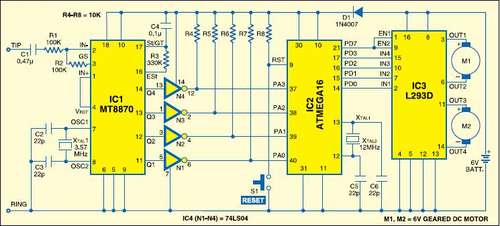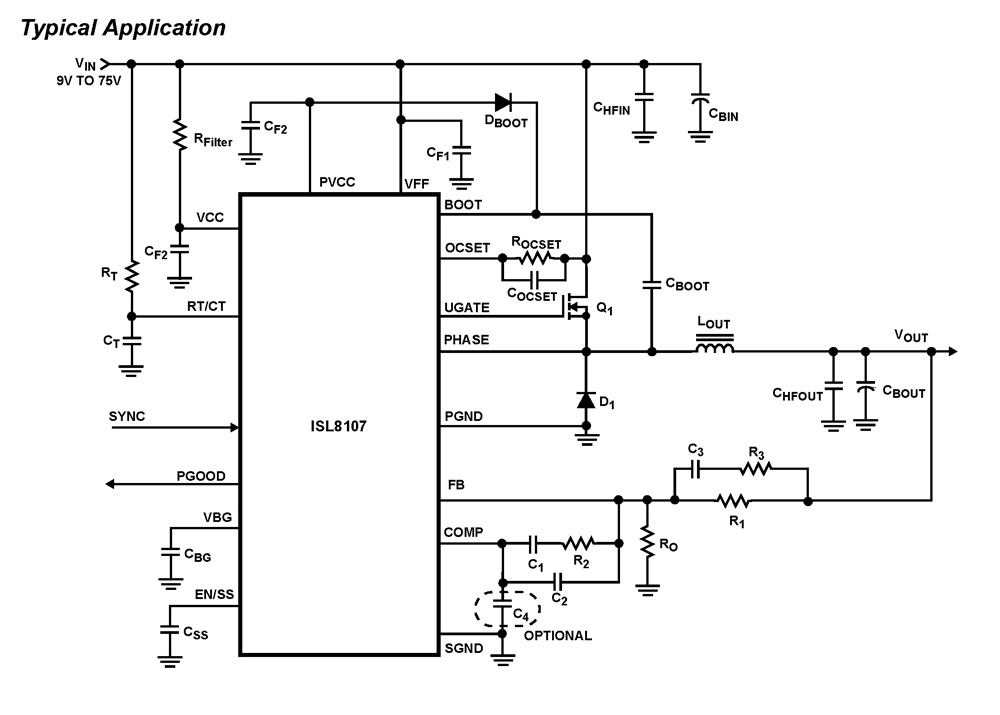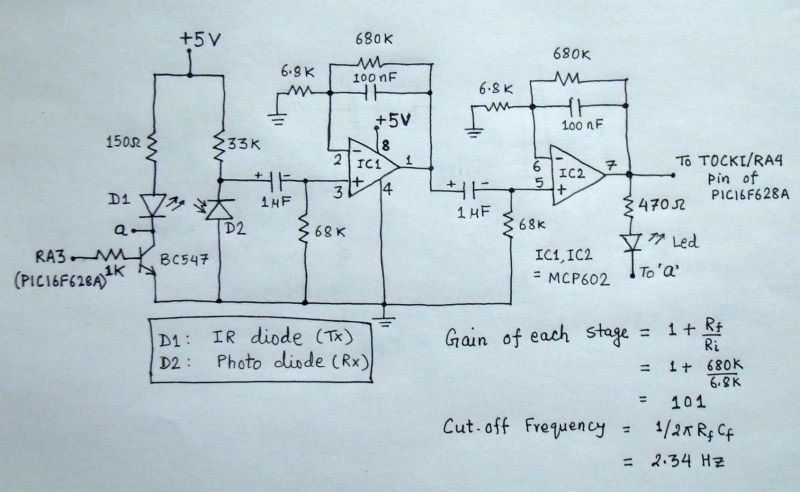
pwm with microcontroller 8051 for scr

This project currently outputs two PWM signals but can be easily extended to generate multiple PWM signals. The input to the microcontroller consists of 100Hz pulses serving as zero-crossing signals. It is designed for a two-channel DAC, where the inputs at port 1 and port 2 of the microcontroller are converted to a 0 to 5V range. However, if control of an SCR is desired, the operational amplifier circuit will be replaced with an optocoupler (MOC3020) for interfacing with the SCR or TRIAC. The program code for PWM control using the 8051 microcontroller for SCR or TRIAC power control is written in C language using the Keil compiler. The C code for PWM is provided.
This project involves a microcontroller-based PWM signal generation system that can be adapted for various applications, including control of SCRs and TRIACs for power management. The primary function of the system is to produce two PWM signals, which can be expanded to accommodate additional outputs as required by the application. The microcontroller receives 100Hz pulses that serve as zero-crossing detection signals, which are essential for synchronizing the PWM output with the AC mains frequency.
The two-channel Digital-to-Analog Converter (DAC) configuration allows the microcontroller to convert digital signals from its ports (port 1 and port 2) into analog voltages ranging from 0 to 5V. This voltage range is suitable for interfacing with various electronic components, ensuring that the output signals are compatible with standard control devices.
In scenarios where control of an SCR is necessary, the design incorporates an optocoupler, specifically the MOC3020, to provide electrical isolation between the microcontroller and the high-voltage SCR circuit. The optocoupler allows for safe operation by preventing high voltages from affecting the microcontroller while enabling the control of the SCR or TRIAC.
The programming aspect of the project utilizes the Keil compiler for developing the C code that governs the PWM signal generation. This code is responsible for determining the duty cycle and frequency of the PWM signals, which can be adjusted based on the requirements of the load being controlled. The flexibility of the PWM configuration allows for efficient power control in various applications, ranging from motor control to lighting dimming systems.
Overall, this project exemplifies a robust approach to PWM signal generation and power control through the integration of microcontroller technology, analog interfacing, and component isolation techniques.This project is currently output two PWM signals but can be extended to many PWM signals very easy. The input to the microcontroller is 100HZ pulses as zero crossing. currently it is build for two channel DAC, the input at port1 and port2 of microcontroller is converted to 0 - 5v accordingly. But if it is desired to control the SCR, then OP-AMP ci rcuit will be removed and optocoupler moc3020 will be used for interfacing SCR or triac. The code of program for PWM with microcontroller 8051 for SCR or triac power control is written c lanuage using keil compiler. The c-code for PWM is as follows. 🔗 External reference
This project involves a microcontroller-based PWM signal generation system that can be adapted for various applications, including control of SCRs and TRIACs for power management. The primary function of the system is to produce two PWM signals, which can be expanded to accommodate additional outputs as required by the application. The microcontroller receives 100Hz pulses that serve as zero-crossing detection signals, which are essential for synchronizing the PWM output with the AC mains frequency.
The two-channel Digital-to-Analog Converter (DAC) configuration allows the microcontroller to convert digital signals from its ports (port 1 and port 2) into analog voltages ranging from 0 to 5V. This voltage range is suitable for interfacing with various electronic components, ensuring that the output signals are compatible with standard control devices.
In scenarios where control of an SCR is necessary, the design incorporates an optocoupler, specifically the MOC3020, to provide electrical isolation between the microcontroller and the high-voltage SCR circuit. The optocoupler allows for safe operation by preventing high voltages from affecting the microcontroller while enabling the control of the SCR or TRIAC.
The programming aspect of the project utilizes the Keil compiler for developing the C code that governs the PWM signal generation. This code is responsible for determining the duty cycle and frequency of the PWM signals, which can be adjusted based on the requirements of the load being controlled. The flexibility of the PWM configuration allows for efficient power control in various applications, ranging from motor control to lighting dimming systems.
Overall, this project exemplifies a robust approach to PWM signal generation and power control through the integration of microcontroller technology, analog interfacing, and component isolation techniques.This project is currently output two PWM signals but can be extended to many PWM signals very easy. The input to the microcontroller is 100HZ pulses as zero crossing. currently it is build for two channel DAC, the input at port1 and port2 of microcontroller is converted to 0 - 5v accordingly. But if it is desired to control the SCR, then OP-AMP ci rcuit will be removed and optocoupler moc3020 will be used for interfacing SCR or triac. The code of program for PWM with microcontroller 8051 for SCR or triac power control is written c lanuage using keil compiler. The c-code for PWM is as follows. 🔗 External reference





